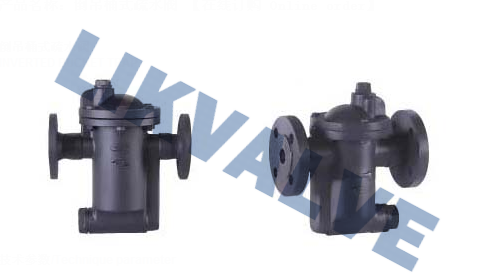进口蒸汽倒吊桶式疏水阀
发布时间 2016-01-03 00:27:45

产品描述
德国莱克进口倒吊桶式疏水阀
INVERTED BUCKET TRAP
技术参数/Technique parameter
|
壳体压力等级 Shell pressure grade |
负荷泄漏率 Load leakage rate |
使用介质 Used medium |
排出高温气体 Discharging of high-temperature air |
允许背压率 Permitted backpressure rate |
节能效果 Energy saving effect |
|
1.6、2.5、4.0MPA |
≈0% |
蒸汽、凝结水 Steam、Condensate water |
适应 Adaption |
≥90% |
优秀 Excellence |
|
处理污物 Disposal of feculence |
**大工作压差 Maximum operating pressure differential |
排水方式 Drainage method |
**高允许温度 Maximum allowable temperature |
排空气装置 Air exhaust system |
抗水击 Resist |
|
适应 Adaption |
4.0MPA |
连续方式 Continue mode |
420℃ |
手动、自动 Manual、Automatic |
适应 Adaption |
主要零件材料/The materials of primary accessories
|
零部件名称Part and component name |
材质Material |
|
阀体、阀盖Valve body、valve cover |
铸钢、不锈钢、合金钢Cast steel、Stainless steel、Alloy steel |
|
吊桶、杠杆Inverted bucket、Lever |
304/316不锈钢304/316 Stainless steel |
|
阀座、阀瓣Valve seat、Valve clack |
STL合金、高铬不锈钢STLAlloy、High chrome stainless steel |
|
过滤网Filtrating screen |
不锈钢Stainless steel |
工作运转流程图 □空气■蒸汽 ■凝结水
1、疏水阀关闭:
疏水阀初始充水后,蒸汽开始进入疏水阀并在倒吊桶顶部积聚,把倒吊桶浮起,将阀瓣推入阀座。
Steam trap closes
The steam trap is filled with water first, steam begins to enter the steam trap and accumulates at the top of the inverted bucket, and then lifts the bucket upward, the valve disc is pushed into the valve seat.
2、疏水阀开始打开:
冷凝水开始流入疏水阀,蒸汽和空气被挤出倒吊桶,使桶渐失浮力,开始拉动阀瓣拉开阀座。
Steam trap starts to open
The condensate water starts to flow into the steam trap, steam and air are expelled from the inverted bucket, and the bucket will lose buoyancy gradually and begins to pull the valve disc to open the valve seat.
3、疏水阀排水:
当足够的冷凝水进入疏水阀,蒸汽和空气被挤出倒吊桶后,倒吊桶落下,将阀瓣拉离阀座,疏水阀向外推出冷凝水和空气。
Steam trap discharge water
When adequate condensate water enters into the steam trap, steam and air are expelled from the inverted bucket, and the inverted bucket drops to pull the valve disc away from the valve seat, the steam trap drives the condensate water and air outward.
4、疏水阀关闭:
在冷凝水停止流入后,蒸汽进入疏水阀并浮起倒吊桶,迫使阀瓣插入阀座,循环重复。
Steam trap closes
When the condensate water stop flowing in, steam enters into the steam trap and drifts the inverted bucket up to force the valve disc to insert into valve seat. These procedures repeat.